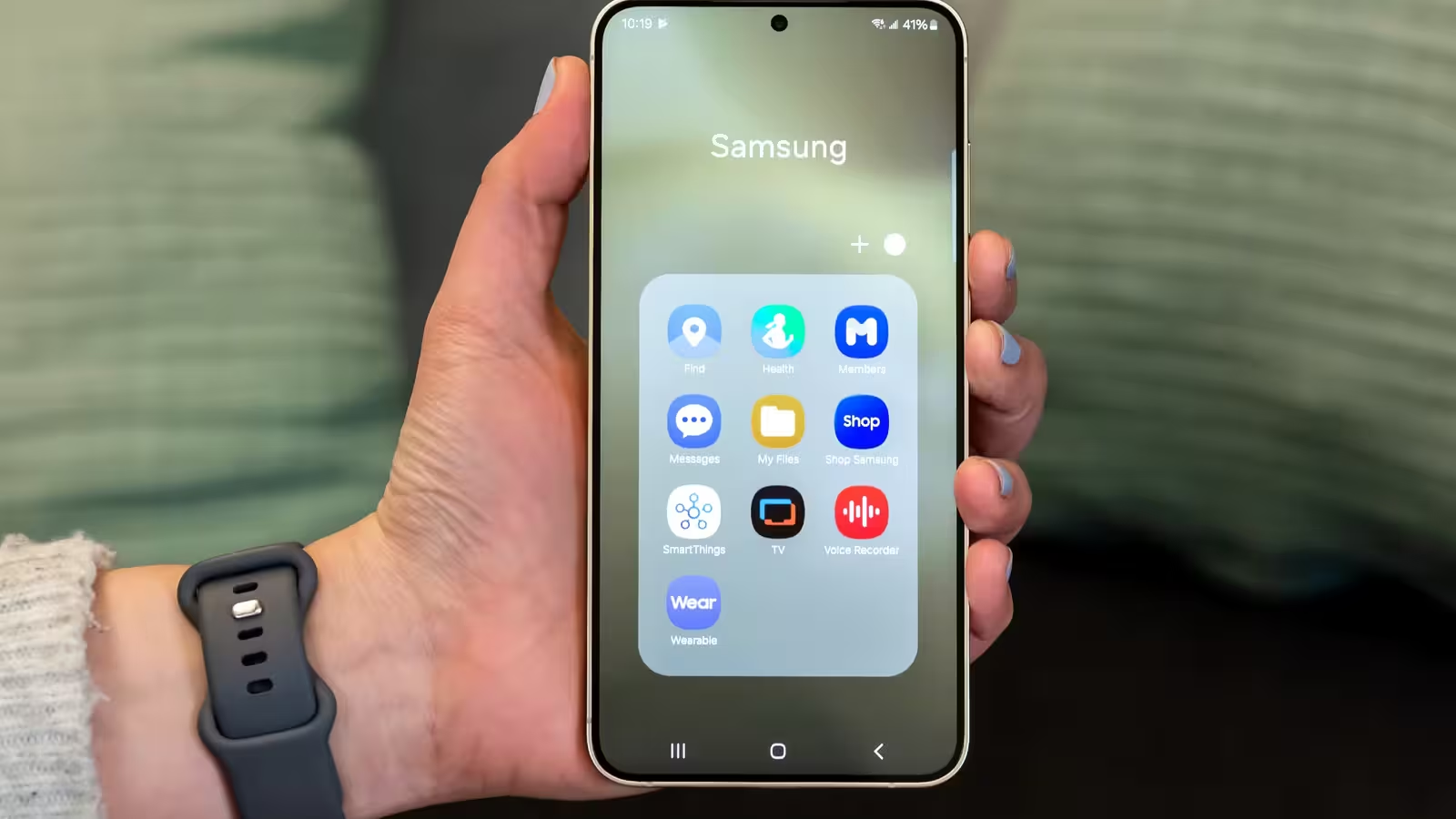10 Minutes
Why Samsung Galaxy Phones Remain Popular, But Still Struggle with Key Issues
Samsung’s Galaxy smartphones are synonymous with cutting-edge Android innovation. From stunning AMOLED displays to powerful chipsets and industry-leading camera technology, Samsung consistently delivers formidable flagship devices and competitive mid-range phones. Yet, even with their remarkable hardware and popular One UI interface, common user complaints have persisted throughout generations. As someone who appreciates Samsung’s strengths and ongoing commitment to Android excellence, several recurring pain points have made the daily experience less than ideal. Here, we break down six major issues that Samsung Galaxy users repeatedly face, discuss the impact on real-world usage, and look at how these compare with rival brands in today's competitive smartphone market.
1. Bloatware Overload: An App Avalanche from Day One
Unboxing a new Samsung phone is supposed to be exciting—but the enthusiasm can quickly fade when you realize just how crowded the software environment is straight out of the box. Almost every Android device comes with a handful of pre-installed apps, but Samsung’s approach is notably aggressive. Alongside core Google apps, Galaxy phones arrive pre-loaded with a suite of Samsung-made apps, including Samsung TV Plus, Samsung Members, SmartThings, and Wearable. Add to this a full batch of Microsoft apps—like Microsoft 365, LinkedIn, OneDrive, and OneNote—and you’re already looking at dozens of apps that many users may never open.
This bloatware is more than just cosmetic clutter. Unused pre-installed apps quietly consume precious storage, sap system resources, drain battery life, and in some cases, even run background processes that slow down performance. This is especially problematic on Samsung’s budget Galaxy models, where internal storage and RAM are already at a premium. While it’s possible to disable or remove some of these apps, the process is neither intuitive nor complete, and the initial impression can be one of unnecessary complexity. For new users—especially those coming from a cleaner Android experience or from iOS—the sheer volume of preloads on One UI can feel overwhelming, setting the wrong tone for the user journey.
Market Relevance and Competitor Comparison
Other major brands like Google (with the Pixel series) and Apple strive to keep the default software setup minimal. The trend in the broader industry is toward flexibility and user choice, making Samsung’s insistence on bloatware feel out of step, particularly in mature smartphone markets.
2. Lack of Support for Multiple User Profiles
One of Android’s unique advantages over competing platforms is the ability to configure multiple user profiles or guest modes—a feature especially useful for families or professionals who need to separate work and personal data. Oddly, Samsung’s phones lack support for this core Android feature, even though it’s available on Samsung tablets and many other Android devices. Instead, Samsung offers ‘Secure Folder,’ which locks files and certain apps behind a PIN or biometric authentication. However, this doesn’t create completely isolated virtual environments for separate users the way full profile switching does on Windows, macOS, and even other Android phones.
The absence of this feature is a notable limitation for those wishing to lend their phone to children or maintain strict work/life separation. For users who switch between devices (for example, a Samsung tablet at home and a Galaxy phone on the go), the inconsistency is especially jarring.
Practical Use Cases
Multiple profiles are invaluable for parents, professionals, and anyone sharing a device. Samsung’s omission means users must seek third-party apps or complicated workarounds that simply don’t match native integration or security standards.
3. One UI vs. One UI Core: Transparency Issues and Feature Gaps
Samsung’s custom Android skin, One UI, is widely praised for its user-friendly interface, customization capabilities, and robust ecosystem integrations. However, the company’s strategy of offering two distinct versions—standard One UI for flagships and One UI Core for mid-range and budget models—has become increasingly opaque. In the past, ‘Core’ branding made it clear that certain lower-tier devices would receive a stripped-down software experience. Yet recent releases have abandoned the explicit ‘Core’ label, creating confusion for consumers who expect feature parity between devices running the same version number (e.g., One UI 6.1).
Key differences between the two abound. Features such as Edge Panels for multitasking, Edge Lighting for notifications, Link to Windows for seamless PC integration, Secure Folder for privacy, and the highly customizable Good Lock suite are missing on Core models. If you buy a more affordable Galaxy device, you often discover these limitations the hard way—by realizing that advertised or highly recommended features simply don’t exist on your handset.
Consumer Impact and Advice
This lack of transparency undermines consumer confidence and can lead to disappointment, especially as many buyers don’t learn the differences until after purchase. Clearer communication around software tiers and capabilities is much needed if Samsung wants to maintain trust among tech-savvy users.
4. Redundant Apps: Duplicate Functionality, Persistent Clutter
Samsung’s long-standing philosophy of offering its own alternatives to Google’s default apps creates an ecosystem brimming with choices—but also with confusion and redundancy. Practically every Galaxy device ships with two sets of core apps: Samsung Internet and Google Chrome for browsing, Gallery and Google Photos for images, and Samsung Messages vs. Google Messages for texting. The same overlap goes for dialers, contacts, file managers, and more.
While having options is beneficial, the downside is that you often cannot uninstall or even disable many of the Samsung-branded apps—especially on One UI. For users loyal to the stock Android or Google ecosystem, these redundant apps end up eating storage, crowding menus, and complicating the overall user experience. Even hiding these apps doesn’t reclaim the resources they’ve already claimed, leaving users with lingering digital clutter.
Advantages and Feature Showdown
To Samsung’s credit, apps like Samsung Internet and Gallery do offer unique features, from advanced ad blocking to integrated editing tools. However, a more flexible approach—letting users fully uninstall what they don’t want—would better serve both tech beginners and power users.
5. Persistent Ads: Premium Phones, Premium Annoyances
Arguably one of the most frustrating aspects of owning a Samsung phone—no matter how high-end the model—is the pervasive presence of ads throughout the user interface. It’s one thing to expect promotional notifications or banners in affordable entry-level smartphones, but Samsung extends ad placements even to top-tier devices like the Galaxy S25 Ultra and Galaxy Z Fold6, both of which command luxury price tags.
Ads appear in notification panels, on the lock screen, inside default Samsung apps (like Weather or Samsung Pay), and sometimes even as pop-ups. Disabling them is far from straightforward—users must navigate a maze of settings, permissions tweaks, and manual notification controls, only to find that some ads persist regardless. For those transitioning from iOS or Google Pixel devices—which pride themselves on a clean, ad-free system—the contrast can be off-putting, and for some, a deal-breaker.
Market Relevance and User Sentiment
As the smartphone market matures, consumer expectations for a premium experience have risen sharply. Samsung’s competitors, especially Apple, have set the bar high with seamless, ad-free interactions. Unless Samsung reconsiders its stance on monetizing the user interface, it risks alienating its most discerning and loyal audience.
6. Slower Charging Speeds: Falling Behind the Fast-Charging Curve
Samsung Galaxy phones are celebrated for battery endurance, display quality, and flagship-level features. However, when it comes to charging speed—a metric of growing importance among time-conscious consumers—Samsung lags noticeably behind main competitors. While brands like OnePlus, Oppo, and Motorola push boundaries with 68W, 80W, or even 100W fast charging, the latest Samsung flagships, including the Galaxy S25 Ultra, still max out at 45W.
This difference manifests in daily use: while rival phones often achieve a full zero-to-100% recharge in under 30 minutes, Samsung users can expect significantly longer wait times. In models like the Galaxy S25 Edge, which combines a large 6.7-inch display with a rather modest 3,900mAh battery, slower charging exacerbates the inconvenience of more frequent top-ups—especially for power users constantly on the move.
Feature Comparison and User Experience
Fast charging is no longer a niche perk; it's a standard expectation, especially in high-end and mid-range Android markets. For users switching between Android brands, Samsung’s relative sluggishness in adopting faster charging protocols can be a key factor in purchase decisions.
Product Features and Ongoing Advantages
Despite these drawbacks, Samsung Galaxy phones continue to lead in areas such as build quality, software update commitment, display technology (such as high refresh rate Dynamic AMOLED panels), camera versatility, and the ever-expanding Galaxy ecosystem (including wearables like the Galaxy Watch and Galaxy Buds). Features such as Samsung DeX, advanced S Pen support (in S Ultra and Fold models), and robust security integrations further cement the brand’s reputation among professionals and tech enthusiasts.
Making the Right Smartphone Choice
For anyone deeply embedded in Samsung’s ecosystem—or those seeking a tried-and-true Android flagship—the benefits still outweigh the frustrations. However, being aware of persistent issues like bloatware, opaque software tiers, redundant apps, intrusive ads, and dated charging technology is crucial to making informed purchase decisions. In 2024 and beyond, as the Android market gets ever more competitive and user expectations rise, demand is growing for Samsung to address these long-standing pain points.
Looking Ahead: Samsung’s Next Moves
Will Samsung take bold steps to streamline One UI, offer true flexibility through profile management, eliminate bloatware, and finally catch up with global fast-charging standards? Only time will tell. Until then, loyal Samsung users must rely on third-party tools, hidden settings, and plenty of patience to optimize their beloved devices.
Whether you’re a newcomer or a long-time Galaxy fan, understanding these challenges—and weighing them against Samsung’s undeniable strengths—ensures you get the most value and satisfaction from your next smartphone purchase.



Comments